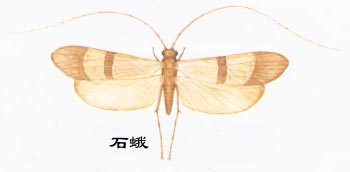[Economic significance] The adults of Trichoptera are called caddisflies, and the larvae are called caddis flies. Caddisfly larvae live in lakes and streams, preferring colder and non-polluted waters. Their ecological adaptability is relatively weak, and they are a better indicator insect for showing the degree of water pollution. Caddisflies are the main food source for many fish and occupy an important position in the food chain of flowing water ecosystems.

[Identification points] The adults are small to medium in size and look like moths. The mouthparts are chewing, but have no chewing function. The antennae are long and filamentous, usually longer than the forewings. The forechest is small and the middle chest is well developed. The wings are narrow, the wing surface is densely covered with hairs of varying thickness, and the hip area of the hind wings is well developed.
The characteristics of this order can be summarized as follows: the caddisfly is a moth-like Trichoptera, with four wings covered with membranous fine hairs; the mouthparts are chewing and sparse; the larvae are aquatic and build huts.
[Species and Distribution] There are more than 7,000 known species in the world, and there are 531 species in my country. Trichoptera is divided into 2-3 suborders and 40 families. Important subjects include:
(1) Leptoceridae
The antennae are very long, usually 2-3 times the length of the forewings, and the base section is spherical. The lower jaw is long, with 5 segments in both sexes. No single eye. The distance between the forefoot and midfoot is at most 2.
(2) Limnophilidae
Has one eye. Mandibular palps have 5 segments in females and 3 segments in males. The tibial pitch of the forefoot is at most 1, and the tibial pitch of the midfoot is 2-3.
(3) Phryganeidae
Large species. The mandibular palps have 5 segments in females and 3-4 segments in males, and have a single eye. The antennae are slightly thicker. Wings mostly opaque. The tibial pitch of the forefoot is 2-3, and the mid-foot pitch is 4.
animal tags: Insects Trichoptera Caddisflies
We created this article in conjunction with AI technology, then made sure it was fact-checked and edited by a Animals Top editor.